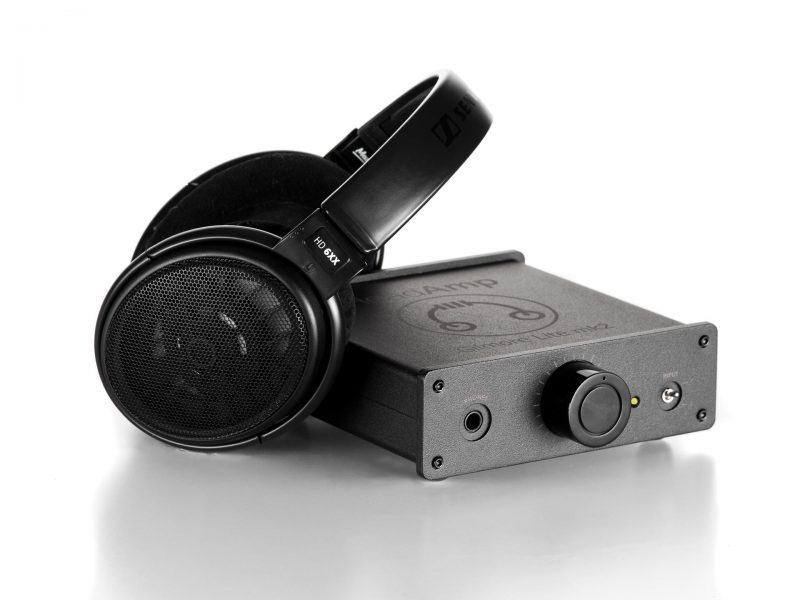Many moons ago, when I first learned about dedicated headphone amplifiers, there was one company that every headphone enthusiast talked about. That company was HeadAmp, a venture dedicated to building and selling clean sounding amps for headphones.
That was back in the early 2000s. Since then, they have expanded their operation to selling high-end headphones, sources, and accessories, but at the end of the day, they still make some of the best headphone amps around, some selling for as much as $5000.
The amp I’m looking at today is their new entry-level desktop model, the $499 HeadAmp Gilmore Lite Mk2. Even though it’s the lowest priced desktop amp in the HeadAmp lineup, there’s nothing entry-level about the performance.
Build And Features
This device is full Class-A, with a max 1.5 watts of power able to drive just about any headphone out there. Only the most demanding flagship headphones will be out of reach for this amp’s capabilities.
The Gilmore Lite’s matte black steel casing is old school; however, the build is solid, and the gold on black engraving along with the thick front and rear faceplates give it a handsome look. It’s an understated design that will fit right in on any desk or nightstand.
Around the back, there’s two RCA inputs and one set of pre-outs for output to powered speakers or another amp. There are also toggle switches for the main power and to turn the pre-out on/off. In the front, there’s a smooth ALPS volume pot, a toggle switch to swap inputs, and a single-ended 1/4” headphone jack.
In the box, you get the amp itself, a multi-voltage power supply, some HeadAmp stickers, and the user manual, which is more of an instruction card. This amp is pretty simple to use, so even an audio neophyte won’t need too much direction.
On the front of the box, there’s a sticker with the model name, along with voltage designation and serial number handwritten in pen. Below this, the label proudly declares, “Handmade in Virginia U.S.A.” I dug the personal touch, and it brought home the bespoke nature of the product.

Listening Time
Listening to the Gilmore Lite Mk2 was an absolute pleasure. I used the iFi nano iDSD LE connected to my HP Envy laptop as a source and played a variety of Tidal files. The sound coming from this amp is so liquid and warm, and it made just about any headphone I used sound awesome. This is hard to do!
I tried several headphones during my tests, and I found one out of my collection that really showcased its strengths. It was the Focal Elear, which I thought was a good test since it’s somewhat hard to match. If you pick an amp that’s too forward, it will rip your ears off with some material.
I loved the Elear x GL Mk2 so much. The Treble came across as very smooth, which allowed the detail and depth of these headphones to shine without playing up their lively treble too much. The soundstage coming from the GL Mk2 also opened up the Focals and gave them a delicate, airy sound I have never heard from them before.
On Donald Byrd’s “Chant” the horns were so natural sounding, and they just hung inside of their little bubbles. The soundstage was very transparent and deep, with the drums focused in the center.
On Rapsody’s “Nina,” the bass rumble that serves as the foundation on the track was deep and taut, with none of the flabbiness you hear from a weaker amp.
To test the driveability of the amp, I hooked up the Mr. Speakers Aeon Flow Closed. It’s a planar headphone which in theory, is not the hardest to drive, but if the headphone amp doesn’t have gusto, it can sound lifeless and dull.
There was no such issue here. The Gilmore Lite Mk2 was more than up to the task, giving the Aeon Flow Closed a beautiful dynamic sound. Not every amp can do this. The bass was again deep and well-controlled, plus they played amazingly open for a closed-back headphone. All the speed and attack you expect from a planar headphone was there.
In comparison to my Burson Soloist SL Mk 2, another amp which cost about $500, the Burson had a more immediate and in some ways more detailed sound. But the treble was a little harder than the Gilmore Lite Mk2, and it was too forward with the Focal headphones. The GL Mk2 was much more open and airy, and the soundstage was much deeper.
The Gilmore Lite was my clear favorite in this comparison. The treble on the Burson was more etched, and the sound was flatter than on the HeadAmp product. The Gilmore Lite Mk2 just was more natural and nuanced all the way around, which is shocking because I consider the Soloist SL a very capable amp.
Conclusion
Man, the Gilmore Lite Mk2 knocked my socks off. It has a lovely warm sound that is both dynamic and nuanced. The soundstage is broad, deep, and focused, plus the bass is also well-composed. It’s built like a tank, and it’s easy to operate. If you are looking for a simple, quality, excellent sounding amp to drive your audiophile cans, pick up this HeadAmp product with no hesitation.

I’m an audio writer who started as a young audio salesman/consumer electronics professional back in the late 90s. That’s where I discovered the magic of 2-Channel sound. My thirst for great sound has led me on a delightful music quest that continues today.



Leave a Reply